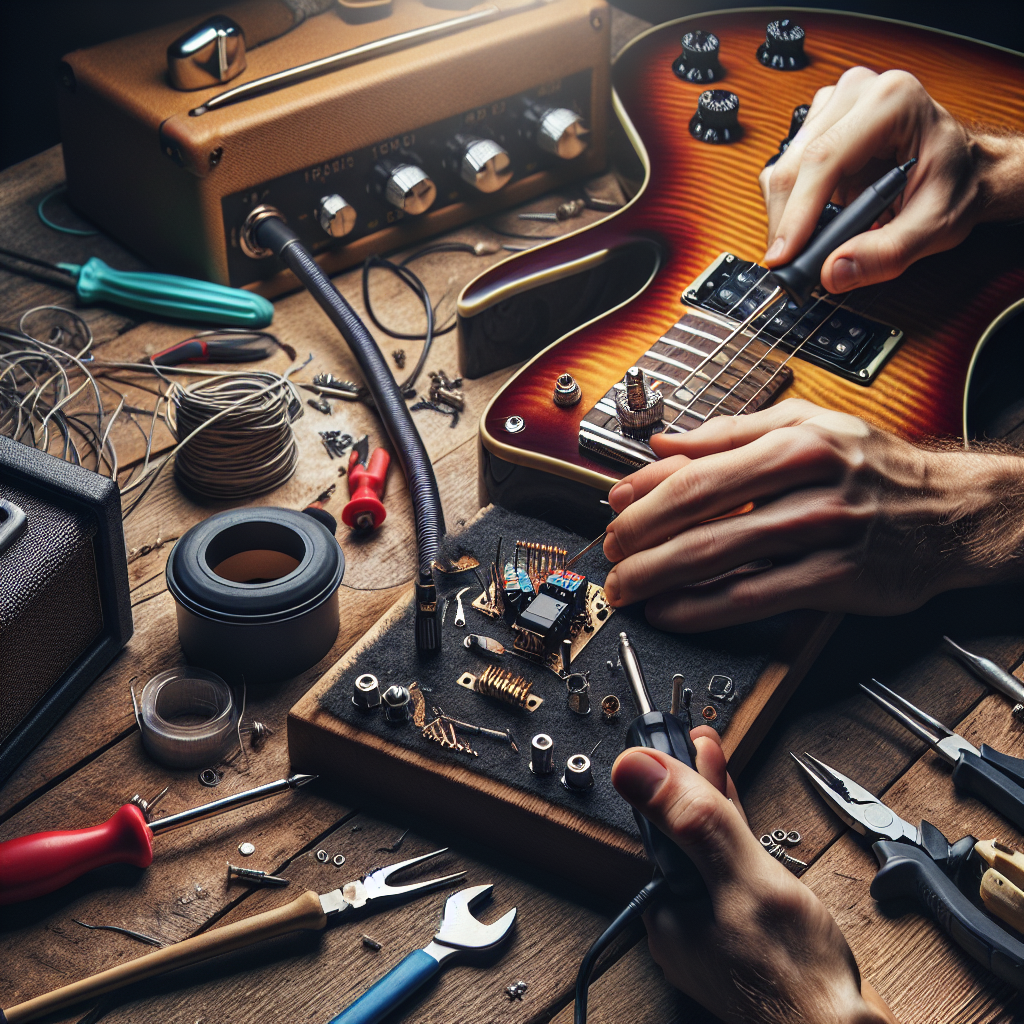
Installing a Push-Pull Pot: 7 Easy Steps for Guitar Owners
Adding a push-pull pot to your guitar is an excellent way to unlock new tonal possibilities and give you greater control over your instrument’s sound. This modification allows you to have two functions in one pot, like coil-splitting a humbucker or engaging a bypass. If you’ve been hesitant to make this upgrade, fear not! This guide will walk you through the process in straightforward steps.
Why Install a Push-Pull Pot?
Before diving into the steps, it’s essential to understand why a push-pull pot could be beneficial for your guitar. A push-pull potentiometer allows you to alter the guitar’s circuit by simply pulling up or pushing down the knob. The dual functionality can change pickup configurations without needing additional switches. This modification provides flexibility and versatility in your guitar’s performance.
Step 1: Select the Right Pot
Not all pots are created equal. First, you must determine the correct specifications for your guitar:
- Resistance: Standard values are 250k ohms for single-coil pickups or 500k ohms for humbuckers.
- Taper: Audio taper pots are generally preferred over linear taper pots for volume and tone controls.
- Shaft size and type: Make sure the shaft will fit your guitar’s knobs.
Choosing the right pot makes a significant difference in achieving the desired sound quality.
Step 2: Gather Necessary Tools and Materials
To install a push-pull pot, you will need:
- Soldering iron and solder
- Wire cutter/stripper
- Phillips-head and flat-head screwdrivers
- Wiring diagram (specific to your guitar model and desired configuration)
- Multimeter (optional for testing connections)
Having the right tools on hand can be the difference between a smooth installation and a frustrating experience.
Step 3: Remove Strings and Access the Guitar’s Cavity
To prevent scratching, first remove the strings from your guitar. Access the electronics cavity by unscrewing the back plate or pickguard, depending on your guitar model. Carefully remove existing knobs if necessary.
Step 4: Desolder Existing Connections
Once you have clear access, you’ll need to identify and desolder the existing pot connections. Take a photo or draw a diagram of the existing wiring to make the reassembly process easier. Apply the soldering iron to the joints and gently pull the wires free.
Step 5: Install the Push-Pull Pot
Place the new push-pull pot into the cavity, ensuring the pins align correctly with your wiring diagram. Secure it in place with the supplied nut and washer.
Use the wiring diagram you have as a reference to reconnect the wires. The push-pull pot will have additional terminals (a, b, c) that need to be soldered to facilitate the push-pull function, such as coil-splitting.
Step 6: Solder the Connections
Using your soldering iron, carefully solder the wires to the appropriate terminals of your new push-pull pot. If you’re using a new function like coil-splitting, make sure to solder these additional wires as per your wiring diagram. Verify each connection to ensure that everything is secure and precise.
Step 7: Test and Reassemble
Once you’re satisfied with your soldering job, reconnect the guitar’s backplate or pickguard and reattach the strings. Plug your guitar into an amp and test out the new configuration. Verify the push-pull functionality; make sure it changes the sound as expected. If everything is working correctly, you’re good to go!
FAQs
1. Can I install a push-pull pot in any guitar?
Yes, most guitars can accommodate a push-pull pot, though you might need to enlarge the cavity slightly in some cases.
2. Do I need special skills to install a push-pull pot?
You should be comfortable with basic soldering and following wiring diagrams. While some experience helps, many first-timers successfully perform this modification by closely following guides.
3. What is the most common use of a push-pull pot?
The most common use is for coil-splitting humbuckers, allowing you to access a single-coil sound from a humbucker pickup.
4. Can I use a push-pull pot for volume and tone?
Yes, a push-pull pot can be wired for either volume or tone control, depending on your needs.
5. Is it reversible if I don’t like it?
Yes, you can easily revert to standard pots if you decide a push-pull isn’t for you. Keep your old setup intact while experimenting.
6. Will installing a push-pull pot change the sound of my guitar?
The core sound won’t change, but the added functionality allows you to alter your tone, offering more versatility.
By following these steps and using the right tools, you can install a push-pull pot and take your guitar playing to the next level. Explore the full potential of your instrument by adding more versatile sound options! For more detailed guidance, consider exploring resources by guitar experts like those at StewMac, which provides thorough advice and materials.